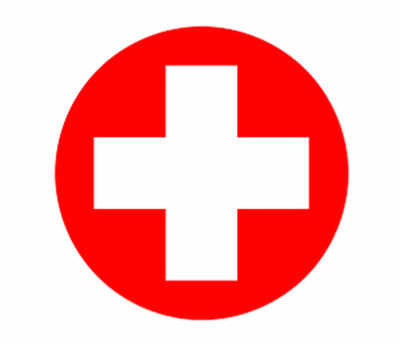Back Pain and cost to workplace By Dr Gautam Arora Neurologist
Industry: Healthcare
Back Pain and its impact on Healthcare Cost By Dr Gautam Arora Neurologist
Monroe, NJ (PRUnderground) April 2nd, 2022
Employees with back pain are absent four more days per year than those without this ailment and have the equivalent of 4.4 more days of presenteeism annually. The cost of less work time and presenteeism makes up more than two-thirds of the total cost of low-back pain to employers, according to IBI, a workforce health and productivity research and measurement organization.
People with low-back pain also have an average of nearly five related conditions that complicate care strategies. The conditions that contribute the most to lost productivity are:
Depression Chronic fatigue Obesity
Pain that quickly resolves can be distracting enough. When pain lasts for more than three months, it becomes chronic. Chronic pain can have serious consequences for work performance, sleep quality, and even interpersonal relationships
Ways Back Pain in the Workplace Impacts Employees
1. Back pain is the leading cause of workplace disability. Lower back pain can lead to more than just a few missed days of work.
2. Back pain saps productivity. While chronic absenteeism – missing days of work – is typically more noticeable, its counterpart, presenteeism, may be more damaging to productivity. Presenteeism means that employees come in when they’re not feeling well, and get distracted by symptoms.
3. Pain makes it harder to make decisions.
4. Pain decreases motivation.
5. Pain can lead to invasive, ineffective surgery.
6. Back pain is expensive. The costs from pain conditions don’t just impact employer healthcare plans. They can also lead to significant out-of-pocket costs for employees, too.
8. Chronic pain is linked to depression.
9. Pain affects interpersonal relationships.
10. Chronic lower back pain negatively impacts overall quality of life.
Low-back pain can be triggered by a variety of causes, including strain, injury, congenital conditions and serious medical problems, such as a ruptured disc. Most back pain can be treated nonsurgically with medication and physical therapy. Episodes of pain can be prevented by using proper techniques for sitting, working and exercising.
Good starting points for managing the full costs of low-back conditions include:
- Occupational therapy. In a number of studies therapy has been shown to reduce the time spent on temporary disability from work.
- Positive expectations. Employees who are optimistic about their recovery from acute back pain have shorter work absences than those with a pessimistic outlook.
- Counseling. Back-pain sufferers may also benefit from counseling and mental-health interventions.
Clearly, organizations must remain proactive in the fight to improve the health of their workers.Back pain is a significant contributor to the rising costs of healthcare. The total direct costs of back pain related healthcare utilization are $96 million a year.
Healthcare costs for people with back pain are on average 60 percent higher than for those without back pain.5 Employer costs are further increased by back pain’s contribution to disability and worker compensation claims. Lower back pain is the leading cause of work related disability in the US.
This has led to considerable direct costs from the condition. Per 100 employees, back pain costs employers $7,100 in short term disability, $4,200 in long term disability, and $1,900 in worker compensation
Preventing back pain – Some techniques that could help reduce the risk of developing back pain include:
- Exercising – Staying active strengthens muscles and reduces inflammation . It is one of the most effective ways to prevent back pain as well as increase overall health.
- Eating well – Obesity is one of the major contributors to rising rates of back pain. Eating moderate, well balanced meals can help maintain a healthy weight and reduce back pain.
- Quitting Smoking – Studies show that smokers are more likely to develop chronic back pain than those who do not smoke.
- Proper lifting – Lifting heavy loads can lead to overly strained back muscles. Use proper lifting techniques such as using leg strength.
- Workplace safety – Workplace accidents such as strains, falls, and car accidents can lead to injuries that result in back pain.
- Walking and standing – Sitting for prolonged periods causes back pain.If employees work at desks, encourage them to take regular five minute breaks and walk around the office.
Methods of treatment – Most back pain does not require surgery. It can often be treated with medications and physical therapy. An effective program for treatment of pain includes: - Active exercise therapy – A range of exercises and physical therapy techniques may be effective at reducing and even eliminating back pain. Strengthening exercises for back muscles and core muscles can help reduce pain and prevent injury from occurring.
- Home based exercises – Home based exercises have been shown to act as a complement to physical therapy, helping to increase their effectiveness.
- Lifestyle changes – Weight loss, a more active lifestyle, and increased safety awareness can all help reduce back pain and prevent injury from occurring.
- Passive therapy – Modalities such as ice packs, heat packs, and ultrasound are often able to reduce pain associated with back injuries temporarily.
About NPMC Neurology and Pain Management Clinic
NPMC Neurology and Pain Management Clinic
E164/1 Kamla Nagar Delhi
info@neuroandpain.clinic
www.neuroandpain.clinic
+918810340685






